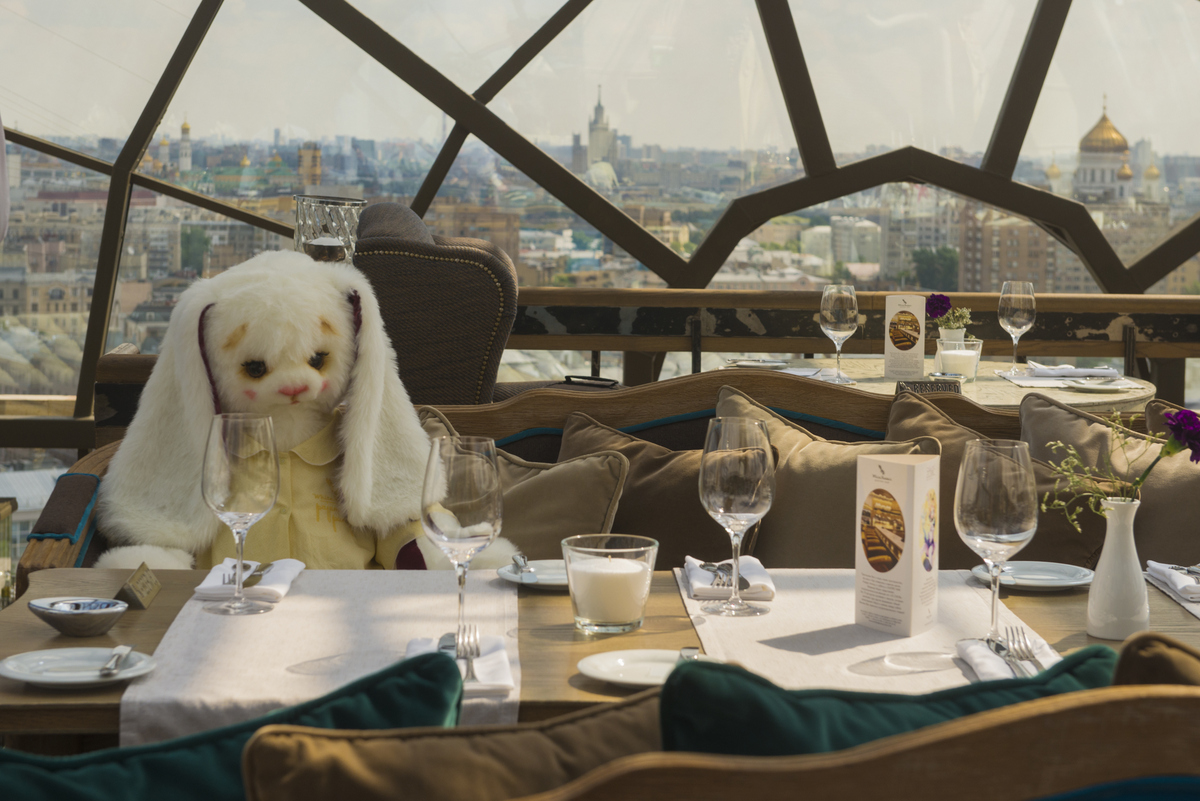Drinking Russian in Moscow
As the rouble tumbles, making imports more expensive, Anton Moiseenko discovers that Russian wines are finally appearing on smart menus
At 3.00 pm on a Sunday afternoon, the White Rabbit restaurant in Moscow is receiving guests. Several tables are occupied by families, restaurant staff are reading fairytales to the smaller children, and even the Stalin-era Ministry of Foreign Affairs skyscraper doesn’t look so bad when viewed through the French windows. Managed by co- founder Boris Zarkov and chef Vladimir Mukhin, the White Rabbit is a symbol of innovation in Moscow’s restaurant scene. It is also one of the few upscale venues that dares to tempt the guests with Russian wine, unimaginable just a couple of years ago.
New opportunities
Sitting on the glass-covered terrace, it’s interesting to speculate about what has changed. The answer lies in a combination of the impact on imports of the devaluation of the rouble, and the growing stories about a renaissance of local wine and small ‘garagiste’ producers who are successfully experimenting with native and international grapes. If it’s no longer a shock to come across a decent Russian wine in a top restaurant, the high prices asked for these bottles – from $60.00 to $120.00 in the White Rabbit – still come as a surprise.
Dmitry Bazashvili, White Rabbit’s sommelier, offers a dozen Russian wines, alongside a couple of hundred from other countries. There are three examples of native Russian grapes and nine blends of local and international varieties. “It’s not our goal to sell specifically Russian wines,” he explains. “Most of our guests are reluctant to perceive local wines as quality ones and it takes a lot of effort and personal tasting experience to change their attitude.” He says that he does a lot of blind tastings, and watches people’s faces change when they see that wines they liked are produced in their country. “Russian wine is still at the experimental stage and has a lot to add to its complexity and overall harmony. It’s obviously a work in progress.” The limited size of the Russian industry and many of its players mean that production costs are higher than they might be elsewhere.
Two bottles from the Usadba Divnomorskoye winery of the Abrau Durso Group command prices of about $85.00 on the White Rabbit’s list. The company’s commercial director Denis Kouznetsov admits that Russian wines are not yet priced for the mass market. High production costs, boosted by the wineries’ reliance on imported rootstock, equipment and chemicals, all mean that, “unfortunately, Russian wines are not cheap to start with”.
Position, position, position
But there are other factors that explain the price restaurants ask for Russian wine. None of the wines on the list could be called ‘local’ to Moscow – the closest wine region, around the city of Rostov-na-Donu, is some 1,100 km south of the capital – and it is a rare Musco- vite who ever gets to see a Russian vineyard. This distance makes it easy for distributors to add high margins to ex-cellar prices. “Wine pricing is a question of positioning, too,” notes sommelier Bazashvili. “As a matter of fact, I will have a hard time persuading our guests that a €20.00 ($23.00) wine can be a quality one, especially when compared to the prices of imported wines that have risen due to the skyrocketing exchange rate of the dollar against the rouble.”
One of the producers on the list is the Vedernikov Winery from the Rostov region, which makes the excellent red Krasnostop Zolotovskiy from the local Krasnostop grape, and a subtle white Sibirkoviy. Its owner, Valery Troychuk, isn’t surprised at the prices being asked for his wines. “In the recent past I had to ask some venues that were charging $170.00 to $230.00 to lower the prices to bring them in line with others.” Taking into account the distributor’s and the restaurant’s margins in Moscow, Troychuk believes $120.00 – five times the actual ex- cellar price – is fair for his top wine.
Wine enthusiast and businessman Mikhail Nikolaev, the founder of the Lefka- dia winery in the Krasnodar region, has three of his wines on the White Rabbit list. Times are tough for importers dealing with rising exchange rates, he says, making it easier for sommeliers and retailers to turn to high-quality Russian wines that offer stable prices. “The distributors are also talking dif- ferently to us these days, it’s the moment of truth.” Only in the wine business since 2004, Nikolaev also acknowledges that positioning has a big role to play in restaurant pricing. “In the end, if a sommelier thinks that our wine is able to compete at these prices, it’s a good thing.”
“Imagine,” says Kouznetsov of Abrau Durso, “All the wineries that are making real progress now simply didn’t exist five to ten years ago. Plus the management of the older ones has changed dramatically.” He believes the changes are positive. “What could hap- pen to a sommelier offering a mediocre Rus- sian wine in a top restaurant? He could eas- ily get beaten up!” he says. “He or she has to make sure the wine’s good enough.”
By 6:00 pm, all of White Rabbit’s tables are occupied and it feels the same as it did before the crisis. With one essential difference – there are Russian wines on the list. Even if there are only a dozen of them, they are standing alongside the finest wines in the world.

